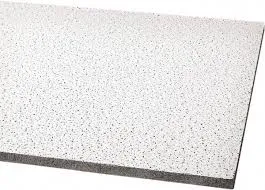9 月 . 26, 2024 06:49 Back to list
ceiling access panel design
Ceiling Access Panel Design Ensuring Functionality and Aesthetics
When it comes to building design and construction, ceilings are often overlooked yet crucial elements of a structure. They serve as the boundary between the finished interior and the systems that lie above, including ductwork, plumbing, and electrical lines. Ceiling access panels are essential components that facilitate easy access to these systems for maintenance and inspection purposes. In this article, we will explore the design considerations and best practices for ceiling access panels, ensuring they not only serve their functional purpose but also complement the overall aesthetic of the space.
Understanding Ceiling Access Panels
Ceiling access panels are openings in the ceiling that provide access to the areas above without requiring extensive removal of ceiling materials. They are typically designed to be discreet and blend seamlessly with the ceiling finish while allowing maintenance personnel to access essential services. The size, material, and placement of access panels can significantly affect both functionality and visual appeal.
Design Considerations
1. Functionality The primary function of a ceiling access panel is to provide access to systems for maintenance and repairs. Therefore, it’s essential to consider the type of systems that will be accessed through the panel. Standard dimensions should accommodate most maintenance tools and personnel requirements. Common sizes include 12 x 12, 14 x 14, or larger, depending on the building's needs.
ceiling access panel design

2. Material Selection Ceiling access panels come in various materials, including metal, plastic, and gypsum. Metal panels are robust and suitable for high-traffic areas, while plastic panels may offer cost-effective alternatives for less demanding applications. Gypsum panels are often used in drywall ceilings and can be painted to match the surrounding surface. The choice of material should consider not only durability but also fire resistance and insulation properties, ensuring they meet relevant building codes and standards.
3. Location and Placement The strategic placement of access panels is critical in maintaining aesthetics and functionality. Panels should be positioned in areas that require regular access, such as near HVAC units or lighting fixtures. However, they should also be discreetly placed to minimize visual disruption. Avoid placing panels in highly visible areas unless they are designed to be aesthetically pleasing.
4. Security Features In some environments, particularly commercial or industrial settings, security is paramount. Access panels can include locks or security mechanisms to prevent unauthorized access. Designing panels with secure locking systems while ensuring they remain easy to open by authorized personnel is a balancing act that must be considered in their design.
5. Aesthetic Integration Aesthetic considerations are essential, especially in high-end residential or commercial spaces. Access panels can be designed to blend seamlessly with the ceiling design, using uninterrupted designs or customized finishes to match the surrounding area. Some panels even feature removable trims that can be painted or finished to visually blend with the ceiling, contributing to a cohesive and harmonious space.
Conclusion
In conclusion, the design of ceiling access panels is a fundamental aspect of modern construction that balances practicality and aesthetics. By understanding the functional requirements and carefully considering the materials, location, and security features, designers and builders can create solutions that not only provide easy access to vital building systems but also enhance the overall aesthetic of a space. Ultimately, effective ceiling access panel design contributes to the longevity and maintenance of a building, benefiting both facility operators and occupants alike. As buildings evolve and maintenance requirements increase, thoughtful access panel design will continue to play an essential role in modern architecture and interior design.
-
Revolutionizing Interior Design with Ceilings t grid Suspended SystemNewsOct.29,2024
-
Revolutionizing Ceiling Design with ceiling access panel with Gypsum Tile WaterproofNewsOct.29,2024
-
Revolutionizing Interior Design with PVC Gypsum Ceiling: A Comprehensive GuideNewsOct.29,2024
-
Elevating Interior Design with High quality Mineral Fiber Ceiling TilesNewsOct.29,2024
-
Revolutionizing Interior Design with PVC Gypsum Ceiling: A Comprehensive GuideNewsOct.29,2024
-
Elevating Interior Design with High-Quality Mineral Fiber Ceiling Tiles: A Comprehensive GuideNewsOct.29,2024







